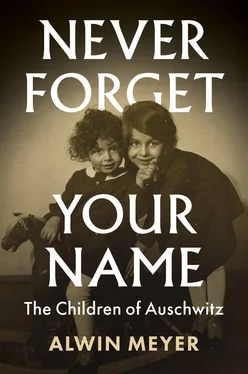Thessaloniki became the ‘Jerusalem of the Balkans’, the ‘Mother of Israel’ or the ‘Mother of Jerusalem’, as the poet Samuel Usque – who was born in Portugal, fled to Italy and later lived in Safed, Palestine – described the city during a visit in the mid sixteenth century: 24
Saloniki is a devout city. The Jews from Europe and other areas where they are persecuted and expelled find shelter in the shade of this city and are as warmly welcomed by it as if it were our venerable mother Jerusalem itself. The surrounding countryside is irrigated by many rivers. Its vegetation is lush and nowhere are their more beautiful trees. Their fruit is excellent. 25
According to official Turkish sources, in 1519 over 50 per cent of the population of Thessaloniki were Jews: 15,715 children, women and men, compared with 6,870 Muslims and 6,635 Christians. The situation had barely changed by the end of the nineteenth century, when there were over 70,000 Jews in the city – again, half of the population. 26
Thessaloniki’s privileged position in international trade gradually declined as a result of the transformation of the world economy. The burgeoning transatlantic economy, particularly the rise of the Netherlands and England, shifted the traditional balance. 27It was not until the second half of the nineteenth century that the revival of trade relations with the Mediterranean ports of western Europe helped the city to flourish again. 28
At this time, Jews were present in all professions. There were 40 Jewish chemists, 30 lawyers, 45 doctors and dentists, 150 fishermen, 500 waggoneers and carters, 220 self-employed artisans, 100 domestics, 3 engineers, 10 journalists, 2,000 waiters, 8,000 retailers and wholesalers, 60 colliers, 2,000 porters, 300 teachers, 250 butchers, 600 boatmen and 50 carpenters. There were also several Jewish businesses: a brewery, nine flour mills, twelve soap factories, thirty weaving mills and a brickworks. 29
At the end of October 1912, during the First Balkan War waged by Bulgaria, Greece, Montenegro and Serbia against the Ottoman Empire, Thessaloniki became part of Greece, 30bringing many Greeks to the city as a result. 31
In August 1917, the city was extensively destroyed in a huge conflagration. The Jewish districts were particularly hard hit. Around 50,000 Jews became homeless. The Greek government promised to compensate them for their losses, but the Jews were not allowed to return to certain parts of the city. This prompted many Jews to leave Thessaloniki. They emigrated to Alexandria (Egypt), Great Britain, France, Italy and the USA. 32
After the Greco-Turkish War (1919–22), an exchange of populations was agreed. A large number of Greeks living in Anatolia in Turkey were forced to move to Thessaloniki. In return, the Muslim inhabitants had to leave the city. 33As a result of all these events, within a few years the Jewish population became a minority. 34According to the first Greek population census of 1913, 61,439 of the 157,889 inhabitants were Jews. 35By the early 1930s, Jewish children, women and men made up only around 20 per cent of the population. 36One contributing factor was a law promulgated in the early 1920s prohibiting the inhabitants of Thessaloniki from working on Sundays, prompting a further Jewish emigration. 37For several centuries previously, the Jews had not worked on Saturdays: during Shabbat, no ships were unloaded and no stores were open. 38This was still the case in 1898: ‘All the boatmen of the port are Jews, and on Saturdays no steamer can load or discharge cargo.’ 39
For over 400 years, the language brought from Spain remained the lingua franca of the persecuted Jews who had fled to Thessaloniki. Anyone visiting the city between 1500 and the early twentieth century who sat down, closed their eyes and listened to the people talking could imagine they were in a Spanish city. For many generations, the city was mostly Spanish-speaking and Jewish. The Greek Christians, Slavs and Muslims in Thessaloniki also spoke Spanish and conducted their daily business in it. 40
‘There are people and lifestyles that are rightly called Sephardic, which means Spanish’, 41wrote the journalist Esriel Carlebach around 1930. He continued: ‘When two Sephardim met, they spoke Spanish; when two families married, the ceremony was performed according to the rites of Seville and Cordoba; when they built a house there was a patio in the centre surrounded by a small number of cool rooms with mosaic floors, grated windows and Moorish paintings.’ 42
The Jewish version of Spanish spoken in Thessaloniki was sprinkled with terms and phrases from Hebrew, but also from Portuguese, and, in the last decades of the nineteenth and early decades of the twentieth centuries, also from Turkish, Italian and – particularly during this time – French. These influences blended over the centuries in Thessaloniki to produce an autonomous language of particular beauty, known as Judeo-Spanish, Spaniolish or Ladino, although the latter refers not to the vernacular Judeo-Spanish but to the liturgical language: ‘Ladino is used to introduce worshippers to the Hebrew original in a manner that is not genuine Spanish but rather a … hispanicized Hebrew.’ 43‘Indeed, the amount of Ladino introduced into the service was quite astonishing’, wrote the travelling scholar Elkan Nathan Adler in the late nineteenth century. ‘Most of the Techinnoth, Confessions and Selichoth were in the vernacular, and the Reader seemed really moved as he held forth in that language.’ 44
From the second half of the nineteenth century, French became increasingly the language of ‘culture and elites … on account of the economic western orientation’, but the vast majority of Jewish inhabitants continued principally or exclusively to use Judeo-Spanish as their everyday language. 45
Myriam Kounio, Heinz and Erica’s grandmother, also spoke almost exclusively ‘Spaniolish’, as the language was called in the family. For that reason, the children, although they could also speak it a little, were not able to communicate very well with her. At home, the younger family members and their grandfather, Moshe Kounio, spoke Greek. With their mother, Heinz and Erica spoke her native language, German. Thus, the children grew up with ‘two and a half languages’. 46‘We were not a strictly religious family’, says Heinz Kounio. They went to the synagogue ‘of course’ on Shabbat and all major holidays. And on those days, he and his sister didn’t go to school. ‘But we were an open-minded family interested in culture. Books, theatre and concert visits were part of our lives.’
Heinz and his sister attended the Greek school from Year 1. ‘But we also had classes in Jewish schools. And religious instruction took place in the Jewish community. In the holidays we went to Karlsbad. It was fantastic there. Where my grandparents lived there was a lake of around 1 hectare in size. We often took a boat out. We went on walks a lot, and the forests there were marvellous.’ They strolled through Karlsbad, a well-known spa, with their grandparents, who looked forward impatiently to the children’s visit every summer. They drank the water – at a temperature of 42 to 73 degrees – from the healing springs, and the highpoint of their excursions was a visit to the expensive cake shop at Hotel Pupp. ‘It was a completely different world from Saloniki. But just as nice. The weeks flew by. I have a very fond memory of those times.’
In Thessaloniki, they also spent every free minute outdoors. ‘We played a lot. Our friends were the neighbourhood children – also non-Jewish children, although several Jewish families lived in our street. Most of my friends were Christian. But there were also four Jewish boys I got on well with.’
Their house was right next to the sea. ‘It was a fantastic district. As soon as the weather allowed, my sister and I spent the entire day on the beach or in the water.’ They had a small white rowing boat, which they used extensively.
Читать дальше












